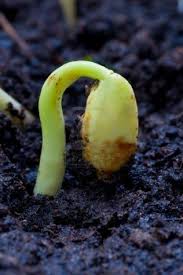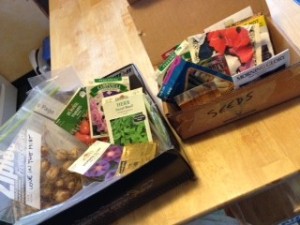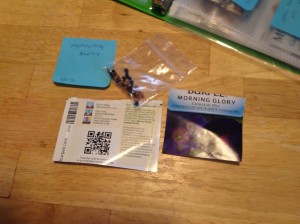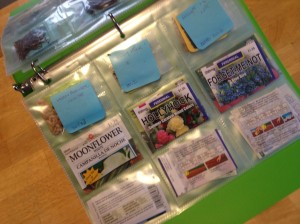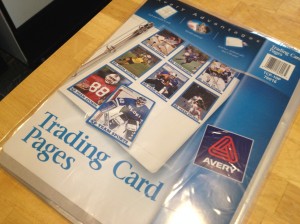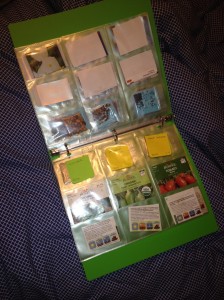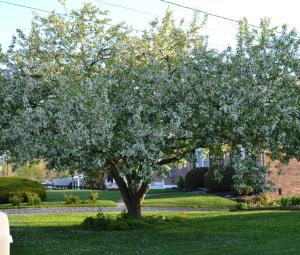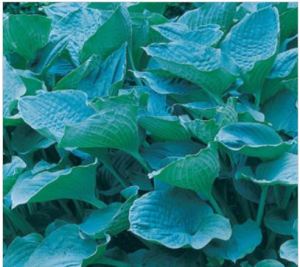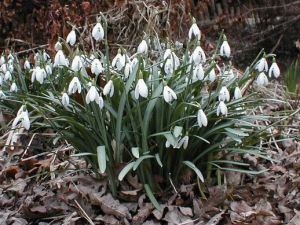I have never really given much thought to the science of starting seeds. I estimate our set out time (here in Zone 5b) to be somewhere between Mother’s Day and Memorial Day. So mid to late May. I usually start my seeds on St. Patrick’s Day – mid March. No science to this logic whatsoever. Most years it works, depending on what seeds I’m starting.
So I’ve been reading many other blogs and a few have mentioned a starting formula, a seed starting schedule. Wow – a formula for starting my seeds. I should have thought of this myself!
We seriously need to start with the seeds. And if you have organized your seeds like me, you know exactly where to find them! Check your seed packets and separate them into 2 categories – those that are sown directly into the soil, and those that are started indoors. Most annuals will be sewn directly into the soil. Most perennials will be started indoors. But take a look.
Most of my seeds indicate “6-8 weeks before last frost date”.
Last frost date? Just how am I supposed to guess at the last frost date? There’s an app for that – well probably, but I did a quick Google search and, lo and behold, a link that reveals the last frost date! Check it out, compliments of the Farmer’s Almanac! You can find cities in the US here, and any Canadian cities will be linked to the closest US Climate Station. Interestingly enough, there are no guarantees here. The site claims to be 50% accurate! Hah! It’s their best guess, I guess! My last frost date is May 1.
Sort your packets according to these recommendations. I added a small sticker to indicate (in large numbers!) which week to start, 4, 5, 6, and so on. Some packets, especially those for perennials, may only tell you how long it takes the seeds to germinate. If that’s all you have to go on, take that figure (which is usually a range) and add 6 weeks. Then label the packet accordingly.
If there’s no information on the seed packet, you can pretty safely just start all your seeds about 6 weeks before you’ll plant them outdoors. Make note of which plants are too big or too small at planting time, and then you can make adjustments next year based on your notes.
Creating the Calendar
To calculate your planting dates, you need to count back from the last frost date in one-week increments. (I base my calendar on Saturdays, because that’s the day that I usually have available for seedstarting). In my area, the last frost date is May 1. For me, when I count back from May 1, Week 4 is April 3, Week 11 is the week of February 13, etc. Simply write the week number (8,4, 6 or whatever) on the seed packet. When the planting week arrives, you just grab the right packet and start planting.
Making Adjustments
Now that you have a great schedule, here are a couple of reasons you may want to make some adjustments:
Start earlier: Seeds take longer to germinate and plants grow more slowly when air and soil temperatures are cool (below 70 degrees F). If you plan to start your seeds in a cool basement or cool bedroom, you may want to shift your whole schedule a week or two earlier.
If you have a cold frame or greenhouse, or if you use row covers or water-filled teepees, you can plant tender seedlings several weeks before the last frost date. Just count back from that expected planting date to get the right date to sow your seeds.
Start later: If you grow your seedlings in a greenhouse or a very warm room, you should cut a week or more out of your schedule. Heat promotes rapid growth, and you could find yourself with giant plants that are ready for the garden before warm weather arrives.
So, back to my seed collection. Most of my seeds that can be started indoors should start 6-8 weeks before last frost date. Seven weeks before May 1, is the week of St. Patrick’s day. So, according to my system, I wasn’t so far off with my “St. Patrick’s day” to “Mother’s day” formula. If I back it up just a bit, I should be able to enjoy a couple more weeks, 50% of the time.
Ah, but beware! Last year was one of the “other” 50% frost dates, as we had a killing frost in late May. By the time I went out to purchase the annuals I hadn’t started, most gardeners in these parts were purchasing their second crop, and the nurseries were sold out. Good for those nurseries, not so good for me.

